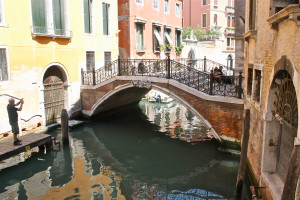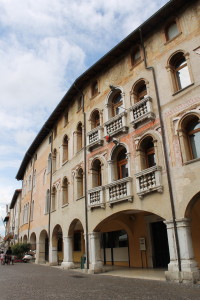Written by Vanessa Santilli on August 11 on Bankrate Canada
Visiting Europe in the summertime is a notoriously expensive feat. From the high cost of bottled water in city centres to the price tag that comes with daily transportation from attraction to attraction, it doesn’t take much to put a major dent in your pocketbook.
But with a bit of preparation and by following these experts’ tips, it is possible to cut back on costs during your next Euro trip.
Plan ahead to minimize card fees
If you’re not prepared for ATM and credit card fees, you’ll be in for a bit of a nasty shock. Carmen Chai, a travel writer who has visited 22 countries, always buys a package with her bank that allows her to cut back on fees when withdrawing money. “BMO, for example, lets me use partner ATMs in Europe as long as I keep a minimum balance in my chequing account under a premium plan.”
Shop around for a competitive currency exchange
Banks are not always the best place to convert Canadian dollars to Euros, says Ann Dennis manager of public relations for BDO Canada. “Look for a currency exchange company and compare the rates. The money I saved using a currency exchange company was put towards my vacation.”
Do the mental math
When you’re shopping or buying meals, keep in mind that the Euro and Canadian dollar aren’t at par. As of the end of July, 1 Euro equalled $1.46 Canadian. That means that a 15 Euro meal costs the equivalent of almost $22 Canadian.
Track down the closest supermarket
While it’s a great experience to visit local eateries, it can be much more cost-effective to buy food at the grocery store. For example, while a sandwich might average about 7 Euros when ordering out, buying the bread and cold cuts separately and then assembling them on your own will cost significantly less. While the savings might not seem immense on a per-sandwich basis, saving a couple Euros a day can have a big impact during a two-week period.
Bring all essentials
While picking up soap and deodorant at home is no big deal, buying toiletries abroad is often more expensive. “Purchase all items of necessity, such as shampoo, razors and tanning lotion in Canada,” says Mary Plahouras, a senior estate manager with MNP Ltd.

Major tourist centres such as Venice are home to prices that can thwart the best efforts of even the savviest saver. (Photo by Vanessa Santilli)
Take advantage of public transportation
As convenient as it might be to take a cab, even short rides can add up. To avoid this, avid traveller Sarah Avarell takes public transit. “Europe has great options for transportation, such as trains and buses, so take advantage,” she advises. To minimize confusion, grab a schedule once you arrive so you can plan your day trips.
Be strategic about your mobile and data usage
If you’re used to surfing the Internet on your mobile phone, be sure to have a plan while you’re abroad. If you opt for a travel package through your phone company, be warned that while you can track data usage, keeping tabs on your minutes is a little less straightforward. Rogers, for example, doesn’t currently offer a voice or text tracker for roaming usage.
Make WiFi your best friend. Or, purchase a local SIM card, says Dennis, adding they are much cheaper than travel packs offered through the major phone companies.
Vanessa Santilli is a freelance writer in Toronto


